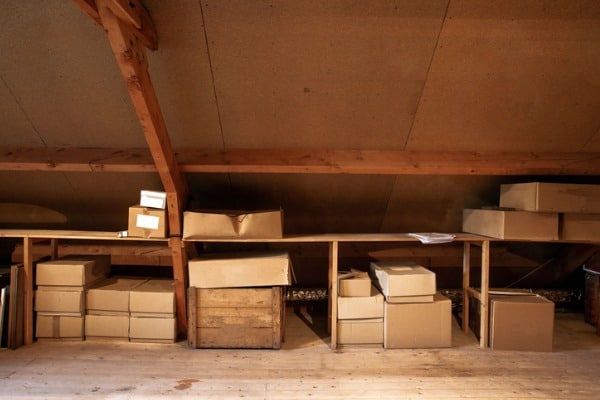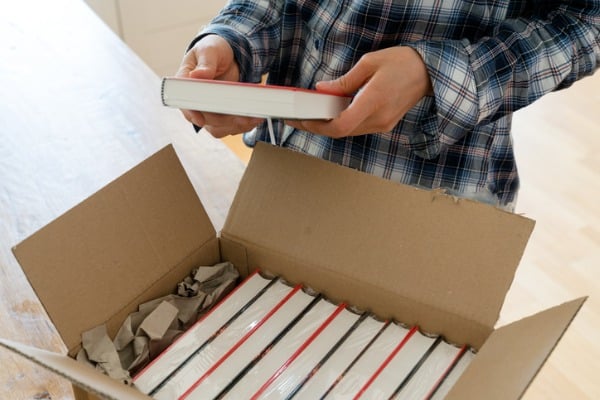
Old house items should not immediately translate to trash; a lot of them hold significant sentimental value for you and your family. They could be old gifts from loved ones, children’s artwork, or other items that have become a sweet part of your family’s history.
Besides, a good number of these items still come in handy sometimes, no matter how long you have had them. But sadly they also sometimes end up making spaces look untidy and they need to be put away for a while. Or maybe you’re relocating to a new house, selling your house, or just renovating and you need a second secure home for the items.
A great way to fix this problem without having to lose them forever is to safely store them in secure locations. You should first take time to prep them for storage so that no matter how long you keep them there, no damage happens to them.
Quick Navigation
Tip #1: Fragile Items Need Cushioning Before Going Into Storage
When we think of fragile items, we often think of objects made from glass. But, fragile objects can be made from other materials apart from glass. Ceramics, electronics, jewelry, and other items you rarely think of when you use the term “fragile items” also fall under this category. Take care to wrap the fragile items one after the other with enough packing paper. You can throw in bubble wrap for extra protection. Then put enough padding at the bottom of the packing boxes; you can use crumpled paper, soft and thick clothing items like towels, or bubble paper. Just make sure to put enough cushioning between the items so they are not grazing on each other and they won’t hit the floor with a thud while inside the box. Also, mark the boxes “fragile” and “handle with care” to alert anyone handling them.
Pay particular attention to breakable or ceramic plates, saucers and bowls; place them on their side for protection. Put cups and glasses upside down too. If you have paintings, mirrors, and framed pictures then put them in specialized mirror boxes. You can put your breakable figurines, statuettes, or fragile collectibles in wooden crates.
Tip #2: Prep Leather Items For Storage
Leather items are probably the most haphazardly stored items. Not many people realize that leather items require just as much care and caution as fragile items when storing. This is why it is a great idea to have a good self-storage facility and https://mammothselfstore.com.au/our-facilities/caloundra-self-storage/ is a great place to start if you want to achieve this. It is never a safe gamble to just throw your leather items into storage without proper prepping first. For prepping you need a leather conditioner; apply on the items and give it 48 to 72 hours to dry first before putting them into storage.
Tip #3: Clean Household Cleaning Equipment First (Pun Intended)
How often do you clean your cleaning equipment? A lot of the time, we forget to clean the most important things – the cleaning equipment. It's quite easy to see why you would not easily think of adding these to your list of things to clean, after all, you do the cleaning with them. But, the truth is that you need to clean them properly before putting them into storage to avoid degradation or rust. For your grill, lawnmower and snowblower pay extra attention to the lines and make sure to drain them properly. Do the same with any other gas-powered units as well. Do this before taking them into storage.
Tip #4: Store Your Photographs With Extra Care
Most of the time, we just toss our old photographs into a box but that is not the best way to store photographs. Photographs often hold the most sentimental value, especially because replicating them with the people in them is often very hard. And it more often is about the exact moment that particular photo was captured. Photographs are the perfect way to immortalize memories and moments in our lives, so it is crucial to keep those memories safe by keeping your photographs safe. To keep your photos safe in storage carefully cushion them between pieces of cardboard. This will keep them flat and well protected and avoid them from curling at the edges. Curling is often the first sign of impending damage.
Tip #5: Be Careful With The Lamp Shades
Lampshades are delicate too and require extra measures for safe storage. To keep them in safe condition while in storage, pad them with enough packing paper and place them inside each other before they go into a box. Bad the bottom of the box with soft items or bubble paper too. This way even if the box shakes you can rest assured that your precious lamp shades are still in good condition and will not break while in storage.
Tip #6: Take Time To Prep Your Books For Storage

When it comes to storing books, you need to take extra care. First of all, make sure the books are well dried; damp books in storage will deteriorate in condition. A perfect way to ensure this is to spread them out under sunlight for a couple of days before you pack them into storage. This way you will be utterly sure that your books are dry enough to withstand storage. However, a red flag to note is molded on the books; if you find any then do not take them into storage. Take them to a good conservator first for expert cleaning and restoration. If the books are leather then you have to wrap them in paper first so they don’t stick to each other.
For the arrangement, it’s best to arrange them in small strong boxes because books themselves are heavily putting them in large boxes will make them much heavier and increasingly difficult to carry about. As a rule of thumb, the safest bet is to stack your nooks flat, putting them upright will put pressure on the spins and possibly damage them and you don’t want your classic novels suffering that kind of damage.
